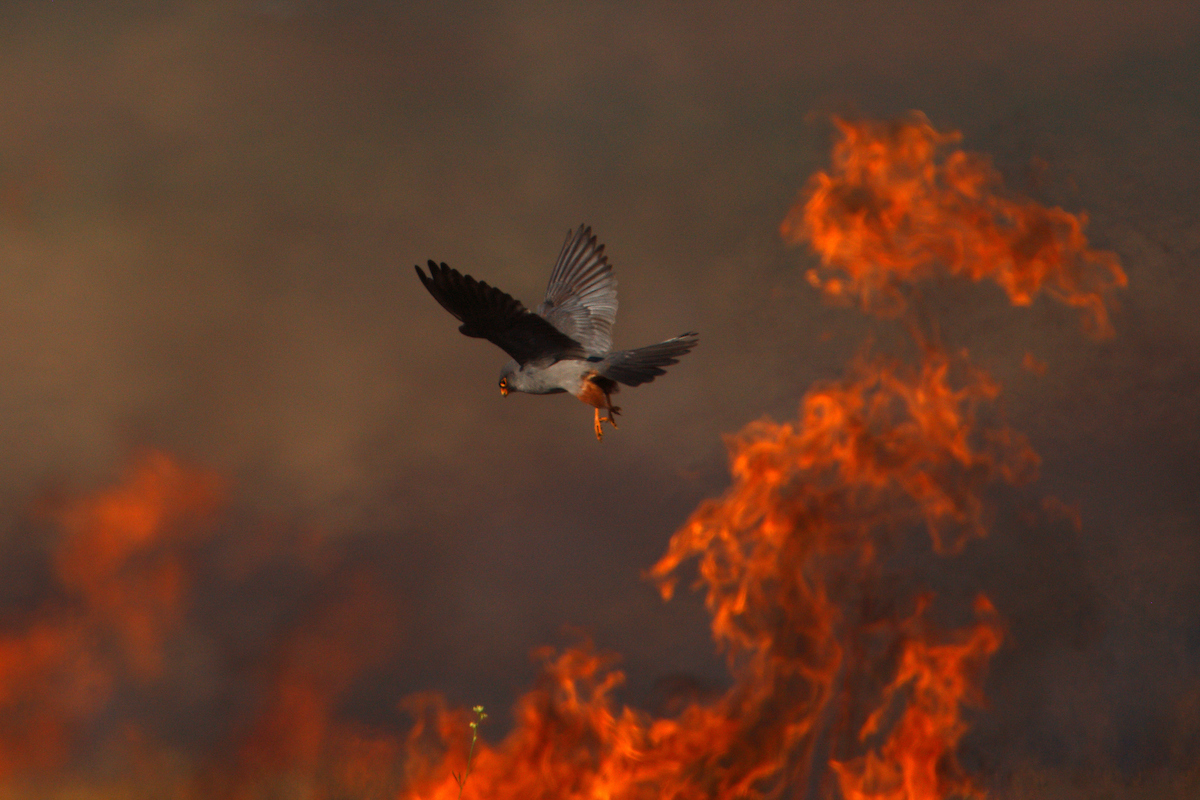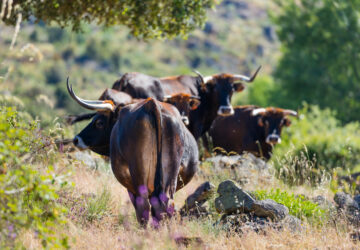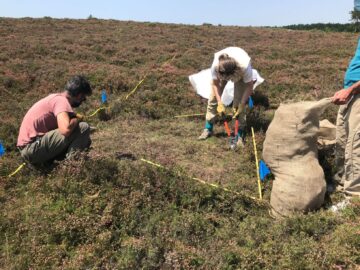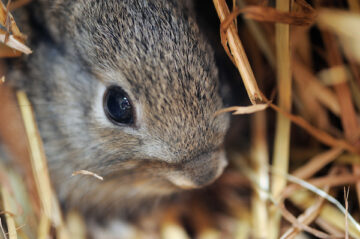Concern about wildfire risk is growing around the world. Yet experience from the GrazeLIFE study area in the Greater Côa Valley in northern Portugal is demonstrating grazing by large, free-roaming herds of herbivores can be a natural solution and a low-impact way of controlling wildfire.

A burning issue
Recent years have seen unusually severe fires in countries such as Canada, the US, Australia, Spain, Portugal, Greece and Chile, claim hundreds of lives and cause huge amounts of economic damage. In many regions, climate change is increasing the likelihood of hot and dry conditions in which wildfires thrive. Fire seasons have already lengthened around the world, and modelling predicts significant increases in fire activity in high-risk areas such as the western US and southern Europe.
The Mediterranean region accounts for around 85 per cent of the burned area in Europe every year. This is due to extreme weather, compounded by problems of rural depopulation, flammable tree species, and encroachment of shrubland on abandoned areas. These fires can be devastating to people, property and wild nature.
The Greater Côa Valley: a case in point

Especially the period from July to October is a risky one in Portugal and Spain every year. Temperatures rise and rains are scarce. This means a great risk of fire. Even though wildfires are a natural phenomenon here, the frequency and scale have increased to very high and dangerous levels that are not natural. And not only because of a changing climate but due to the combined effect with changes in land use.
Like much of the Mediterranean region, the Greater Côa Valley has experienced high levels of land abandonment for many years. As people have left the land, so grazing livestock numbers have plummeted, meaning many landscapes are increasingly covered by young, often monotonous forest or dense scrub. The proliferation of bushes, coupled with the close plantation of pine and eucalyptus trees, leaves such landscapes highly susceptible to wildfire.
Grazing fire brigades

To date, the most common way of mitigating wildfire risk has been to promote and develop expensive and complicated fire prevention programmes. Even when people look for natural solutions to wildfires, they tend to focus on vegetation – not animals.
Yet experience from the GrazeLIFE study area in the Greater Côa Valley in northern Portugal is demonstrating how rewilding – and more specifically grazing by large, free-roaming herds of herbivores such as horses and wild cattle – can be a far cheaper and far more natural, low-impact way of controlling wildfire while boosting local biodiversity at the same time. Such herds are rapidly gaining a reputation as highly effective “grazing fire brigades”.
By bringing back wild and semi-wild herbivores – GrazeLIFE-partner ATN (Associação Transumância e Natureza) and the Rewilding Portugal team are significantly reducing wildfire risk, with such herbivores consuming plant matter that would otherwise accumulate as fuel, creating mosaic landscapes with open spaces that act as effective firebreaks, and reengineering the soil and litter layer.
Immediate impact
Since 2006 around 45 Garrano horses have been released into the 1000-hectare Faia Brava Reserve, which straddles the Côa Valley, plus a number of Tauros. These animals have already reduced the incidence of wildfire in Faia Brava. In 2017, much of the Greater Côa Valley was severely impacted by fire. The reserve and surrounding area escaped, principally because of natural grazing and permanent vigilance.

Assessing wildfire risk
An important part of GrazeLIFE is working on a robust knowledge-base on different types of grazing and their effect on biodiversity, wildfire prevention and other benefits for people and nature. In 2020, a team from Universidade da Coruña, one of our GrazeLIFE partners, started with fieldwork in the Serra da Groba area in northwestern Spain. About 1100 Galician ponies roam freely in this area.
Because one of the most important parameters to assess wildfire risk is the amount of fuel, the team collected data on plant biomass, to evaluate the risk in this grazed area and compare it with the main alternative land use in the region, which is afforestation.

Added value
The creation of mosaic landscapes through natural grazing also helps to enhance biodiversity. In the Greater Côa Valley, such landscapes are helping to boost populations of species such as the European rabbit and red-legged partridge, which in turn increases the availability of prey for predators such as the Iberian lynx and Bonelli’s eagle and scavengers such as vultures.